Demos and Posters Recapitulation.
(Full descriptions are available in conference proceedings, Springer). |
| |  | Glasses-free 3D Image Viewer by Handmade DIY Craft
Takashi Hosomi and Kunio Sakamoto
Department of Intelligence and Informatics, Konan University 8-9-1 Okamoto, Higashinada, Kobe 658-8501, Japan
We developed a glasses-free 3D stereoscopic display using an LCD display panel, a view control film and a grating film for stereoscopic viewing. The display screen is divided in half in order that left and right regions provide the stereoscopic images for left and right eyes. Because both stereoscopic images are not in the same position, it is difficult for the observer to view the 3D image by the stereoviewing. The grating film can solve this problem because it shifts both left and right images to the same position. Moreover the view control film can give us glasses-free 3D viewing. As the result, the observer can watch overlapped stereoscopic images for left and right eyes without special glasses such as polarized glasses.
back to top |
|
 | Monocular 3D Vision Using Real-time Generated Scene with Depth of Field Effect
Takashi Hosomi and Kunio Sakamoto
Department of Intelligence and Informatics, Konan University 8-9-1 Okamoto, Higashinada, Kobe 658-8501, Japan
The human vision system has visual functions for viewing 3D images with a correct depth. These functions are called accommodation, vergence and binocular stereopsis. Most 3D display system utilizes binocular stereopsis. The authors have developed a monocular 3D vision system with accommodation mechanism, which is useful function for perceiving depth.
back to top |
|
 | RFID Painting Demonstration
Olivier Haberman(1) , Romain Pellerin(2), Eric Gressier-Soudan(2), Ugo Haberman(3)
(1) 17 rue Casimir Perier, 75007 Paris, France,olivier.haberman@orange.fr
(2) CNAM-CEDRIC, 292 rue St Martin, 75 141 Paris Cedex 03, France {romain.pellerin, eric.gressier_soudan}@cnam.fr
(3) Hippocad, 16 rue du Château, 77300 Fontainebleau, France ugo.haberman@hippocad.com
This demonstration challenges the conventional art experience. It brings together the fields of art, science, and software integration. The goal was to create a new kind of painting based on embedded technology, experimenting with a new media: paintings augmented with RFIDs. The aim was to achieve interaction between the artist's paintings and art gallery visitors.
back to top |
|
 | Development and Evaluation of a Digital Vegetation Interaction Game for Children
Akiko Deguchi(1) , Shigenori Inagaki(2), Fusako Kusunoki(3), Etsuji Yamaguchi(4), Yoshiaki Takeda(2), Masanori Sugimoto(5)
(1) Faculty of Education, Utsunomiya University, Japan deguchia@cc.utsunomiya-u.ac.jp1
(2) Graduate School of Human Development and Environment, Kobe University, Japan inagakis@kobe-u.ac.jp
(3) Faculty of Art and Design, Tama Art University kusunoki@tamabi.ac.jp
(4) Faculty of Education and Culture, University of Miyazaki etuji@cc.miyazaki-u.ac.jp
(2) Graduate School of Human Development and Environment, Kobe University, Japan takedayo@kobe-u.ac.jp
(5) Graduate School of Engineering, University of Tokyo sugi@itl.t.u-tokyo.ac.jp
In this study, we develop a new digital sugoroku game that portray the phenomenon of vegetation succession in a forest. The results of the experimental evaluation showed that the game was effective in stimulating the interest of the students who participated in the game.
back to top |
|
 | 4-views Display System for Collaborative Tasks on Round Table
Mitsuru Okumura and Kunio Sakamoto
Department of Intelligence and Informatics, Konan University 8-9-1 Okamoto, Higashinada, Kobe 658-8501, Japan
This paper describes 4-views display system that can be viewed from any direction (i.e., the display has four viewing zones so as to perceive a screen view of the display at all directions around a table). The authors have ever researched information display systems involving 3D imaging. However, a conventional monitor display is viewed from one direction, that is, the display has narrow viewing angle and observers cannot view the screen from the opposite side. Hence we developed a tabletop display system for collaborative tasks cooperated by two users. This tabletop display can provide different images to two users surrounding the system utilizing the image splitting technologies for displaying a stereoscopic 3D image. The viewing zones of this display are generated at both sides in front of observers’ eyes. But screens on the monitor cannot be viewed correctly by all users from any direction. Thus, conventional display systems enable users not to do collaborative tasks on the round table. To solve this problem, we developed new viewing systems.
back to top |
|
 | Invisible Two-dimensional Code Display for Additional Information
Tomofumi Yamanari and Kunio Sakamoto
Department of Intelligence and Informatics, Konan University 8-9-1 Okamoto, Higashinada, Kobe 658-8501, Japan
The authors have researched a support system of the reminiscence and life review activity. This support system consists of an interactive tabletop display and interface system. Many interaction systems are proposed until now. An invisible code is one of the useful technologies for a computer interaction. The invisible codes provide us with an operating environment using a pen-like device. However, this technology is applied to the only paper media. The authors think we want to realize an interaction using the invisible code on an electrical media. In this paper, we propose a method to display invisible codes using LCD panels and to detect a polarized symbol image with a conventional CCD camera.
back to top |
|
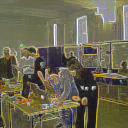 | MobiSpell: Educational Mobile Game Design and Development for Teaching Spelling to Young Children
Menelaos Bakopoulos and Sofia Tsekeridou
Athens Information Technology, 0.8km Markopoulou Ave., 19002 Peania, Athens, Greece {mbak, sots}@ait.edu.gr
A 3D educational mobile game is designed and implemented with the aim to teach hard-to-spell words to young children exploiting their natural affinity towards games entertainment in order to increase the likelihood of useful knowledge acquisition while having fun. The educational game features a fighter plane style environment in which spelling is accomplished by shooting down letters. Incentives and motivation such as points and medals encourage learning and motivate children to develop skills. The J2ME Mobile 3D Graphics library is used with 3D models developed in 3DS MAX, and development taking place in Netbeans.
back to top |
|
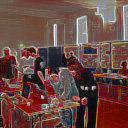 | Live demonstration of the pervasive game “GPS Joker”
Ivo Flammer(1) and David Guyard(2)
(1)XiLabs, Urban Game Studio, 12 rue Vivienne, 75002 Paris, France ivo.flammer@xilabs.fr
(2)SFR, 1 Place Carpeaux - Tour Séquoia, 92915 Paris La Défense, France david.guyard@fr.sfr.com
From the virtual to the real, everybody is looking for the Joker... your mobile phone guides you through the city. Be the first one to win the Joker. Enter the game and play your session here in Paris!
back to top |
|
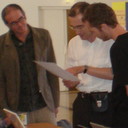 | Rapid Interactive Installation Development Using Robust Computer Vision and Image-Based Rendering
Denis Perevalov
Institute of Mathematics and Mechanics, Ekaterinburg, Russia, denis.perevalov@mail.ru
The paper describes a technique which lets designers imple- ment artistic ideas rapidly into an autonomous interactive art system. The technique consists of two parts: the fixed set of computer vision algo- rithms and image-based rendering with branching animation sequences. Despite some limitations, the technique provides easy implementation of the wide range of fascinating interactive scenes.
back to top |
|
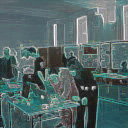 | Reinforcement Learning for Blackjack
Saqib A. Kakvi
Goldsmiths, University of London, SE14 6NW, London
This paper explores the development of an Artifcial Intel- ligence system for an already existing framework of card games, called SKCards, and the experimental results obtained from this. The current Artifcial intelligence in the SKCards Blackjack is highly awed. Reinforcement Learning was chosen as the method to be employed. Rein- forcement Learning attempts to teach a computer certain actions, given certain states, based on past experience and numerical rewards gained. The agent either assigns values to states, or actions in states. This will initially be developed for Blackjack, with possible extensions to other games. Blackjack is one of the simpler games and the only current game in the SKCards package which needs an Arti�cial Intelligence agent. All the other games are single player. To test the performance of the Rein- forcement Learning agent, several experiments were devised and run.
back to top |
|
 | “Plug: Secrets of the Museum”: A Pervasive Game Taking Place in a Museum
Michel Simatic(1), Isabelle Astic(2), Coline Aunis(2), Annie Gentes(1), Aude Guyot-Mbodji(1), Camille Jutant(1), and Emmanuel Zaza(3)
(1) Institut TELECOM, 46 rue Barrault, 75634 Paris Cedex 13, France, gentes@telecom-paristech.fr|audeguyot@gmail.com|camillemontreal@gmail.com|michel.simatic@it-sudparis.eu
(2) Musée des arts et métiers, 292 rue Saint-Martin, 75141 Paris Cedex 03, France,{isabelle.astic|coline.aunis}@cnam.fr
(3) TETRAEDGE Games, 54 rue Marceau, 93100 Montreuil, France, ezaza@tetraedge.com
“Plug: Secrets of the Museum” (PSM) is a game played with NFC-enabled mobile phones inside a museum containing dedicated passive RFID tags. During a PSM session, 8 teams exchange virtual cards representing objects located in the museum. These exchanges are done either with RFID tags or with other teams. PSM game design results in an educational and entertaining game which is much more attractive than the plain old treasure hunt proposed by several museums. Thus PSM is a good companion to discover and even take up a museum.
back to top |
|
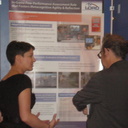 | In-Game Peer Performance Assessment Role that Fosters Metacognitive Agility and Reflection
Elaine M.Raybourn
Sandia National Laboratories, P.O. Box 5800 MS 1188 Albuquerque, New Mexico USA, 87185 emraybo@sandia.gov
In this paper we describe the development of a method and system for training metacognitive agility (self-awareness and self-regulated learning) in serious games applications. We introduce a unique design that features a novel role for real-time, in-game peer performance assessment and feedback to encourage user reflection and self-explanation. This approach has been implemented in two serious games currently in use today whose focus is intercultural competence and intercultural sensitivity education.
back to top |
|
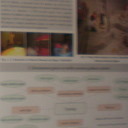 | Edutainment Games for Mobile Multimedia Museum Guidance Systems: A Classification Approach
Areti Damala
CEDRIC / CNAM, 282 rue Saint-Martin, Paris, France areti.damala@gmail.com
This paper proposes a first sketch on the state of the art regarding interactive edutainment games delivered through mobile multimedia museum guidance systems used in the context of a cultural visit. The goal is to identify current practices but also potential functional requirements, through the introduction of a first set of classification criteria emerging from a literature review of representative projects. The issue of related evaluation practices is also discussed.
back to top |
|
 | Orpheus: Automatic Composition System Considering Prosody of Japanese Lyrics
Satoru Fukayama(1), Kei Nakatsuma(1), Shinji Sako(2), Yuichiro Yonebayashi(1), Tae Hun Kim(1), Si Wei Qin(1), Takuho Nakano(1), Takuya Nishimoto(1), and Shigeki Sagayama(1)
(1)The University of Tokyo ffukayama, k-nakatsuma, yonebayashi, kim, qin, t-nakano,nishi, sagayamag@hil.t.u-tokyo.ac.jp
(2)Nagoya Institute of Technology, sako@mmsp.nitech.ac.jp
back to top |
|
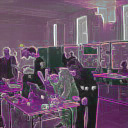 | A Handy Laser Show System for Open Space Entertainment
Toru Takahashi(1), Miki Namatame(2), Fusako Kusunoki(3), Isao Ono(1) and Takao Terano(1)
(1)Tokyo Institute of Technology, Nagatuda, Midori-ku, Yokohama, Japan, {toru@trn, isao@, terano@}.dis.titech.ac.jp
(2)Tsukuba Institute of Technology, Tsukuba, Ibaragi, Japan, miki@a.tsukuba-tech.ac.jp
(3)Tama Art Univeristy, Hachioji, Tokyo, Japan, kusunoki@tamabi.ac.jp
Big Fat Wand (BFW) is a handy laser show system, which includes a portable laser show device newly developed and a laptop PC with easy-to-use authoring toolkits. This paper describes basic principles and architecture of BFW, then demonstrates how BFW is used in an open space environment.
back to top |
|
 | Sketch-It-Up! Demo
Bulut Karakaya, Camilo Garcia, Daniel Rodriguez, Manoj Nityanandam, Nadia Labeikovsky, Theyab Al Tamimi
700 Technology Drive, Pittsburgh, PA – 15219, United States of America, contact@sketch-it-up.com
back to top |
|
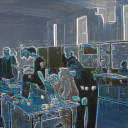 | Automatic Chat Generation of Emotional Entertainment Characters using News Information
Jun’ichi Hoshino, Hiroshi Mori, and Tetsuya Saito
University of Tsukuba, Graduate school of Systems and Information Engineering, 1-1-1, Tennodai, Tsukuba-shi, Ibaraki, Japan {jhoshino, stetsuya, hmori}@entcomp.esys.tsukuba.ac.jp
Currently interactive entertainment characters have their conversation topics prepared beforehand by the creator. In this paper, we propose the automatic chat generation engine for emotional entertainment characters using real-time news information. The character emotionally reacts to the news contents based on their interest and feelings so that the users can have intimate feeling. The character also incrementally learns user’s interest from their response.
back to top |
|
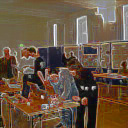 | Incremental Learning Algorithm for Online Action Game System
Junichi Hoshino, Hiroshi Mori
University of Tsukuba/ JST CREST 1-1-1, Tennodai, Tsukuba-shi, Ibaraki, Japan {jhoshino, hmori}@esys.tsukuba.ac.jp
One of the limitations of computer opponents in action games is that the character AI is constructed in advance, and players may become bored quickly. We have built an online action game system in which a non-player character (NPC) can incrementally learn sequences of action and combinations. NPCs can adopt different fighting strategies for fighting with different players.
back to top |
|
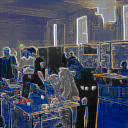 | Task-Based Second Language Learning Game System
Jun’ichi Hoshino, Tetsuya Saito, and Shiratori Kazuto
University of Tsukuba, Graduate school of Systems and Information Engineering, 1-1-1, Tennodai, Tsukuba-shi, Ibaraki, Japan stetsuya@entcomp.esys.tsukuba.ac.jp, jhoshino@esys.tsukuba.ac.jp
In traditional English learning as a second language, learners rarely have the opportunity to practice oral communication, so the acquisition of oral proficiency is a slow process. In this paper, we propose a task-based second language learning game system. The task-based learning method enables learners to obtain communicative skills through the practice of particular “missions” using voice and gesture communications with life-size 3D game character.
back to top |
|
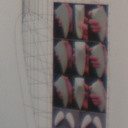 | Designing a Game Controller for Novice HALO3 Players
Matthijs Kwak, Ben Salem
Department of Industrial Design, Eindhoven University of Technology, Den Dolech 2, 5600MB, Eindhoven, The Netherlands. matthijs.kwak@gmail.com, mail@bsalem.info
This paper describes the process of designing and developing an intuitive controller that helps lower the threshold for novice gamers to play Halo 3. To help novices to master the controller, most controls have been replaced with rich and meaningful interaction. To help novices understand the game, extra feedback channels have been added to reinforce information given onscreen so critical information is not missed.
back to top |
|
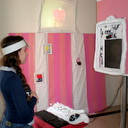 | WHO AM I? : a Art Ludic Installation in Virtual Reality.
Sophie Daste(1) and Karleen Groupierre(2)
(1)ATI (Arts et Technologies de l’Image) Department of Art
(2)CEN (Création et Editions Numériques) Department of Hypermedia University of Paris8 at Saint-Denis
WHO AM I ? is an installation adapting in augmented reality the principle of the game “Le Scotché”. Imagine that instead of having a card stuck to your forehead, a virtual head placed on your shoulders reacts emotionally to real time actions… The simple idea of the change of head has come up after a discussion about the nolimited capacities of the Virtual Reality. So we just thought it was funny to change our face with a virtual head! So The “WHO AM I?” Project is born!
back to top |
|
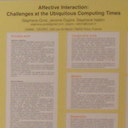 | Affective Interaction: Challenges at the Ubiquitous Computing Times.
Stephane Gros, Jerome Dupire, Stephane Natkin,
CNAM - CEDRIC, 292 rue St Martin 75003 Paris, France gros.stephane@gmail.com, dupire@cnam.fr
Due to the diversity of studies towards detection of affective state of a user, it is hard to distinguish amongst them toward specific needs. Our approach consists in realizing a comparative study taking in account specificities such as mobility to be able to choose the best settings for a specific set of constraints. These issues will be applied in the context of the PLUG project which aims at creating an ubiquitous affective game that will take place in a museum.
back to top |
|
 | S_Face.
Kim Unzi
CHUNG-ANG University, 221 Heukseok-dong, Dongjak-gu, Seoul Korea, unzi@cau.ac.kr
This Artwork has been presented in the personal exposition “I’m the Light” in 2008. It has been recorded by 3 Camcorder [Front, Sides] to give the sensation of real volume image. By spatial experience, we acknowledge the conception of time and life. The ultimate goal of art is to translate the emotion of reality and the sensation of joy of life. The union of images made by the afterimages on the iris is now under the form of cerebral images. The real form shown by the image of a weightless and shapeless shade is not reality. It is in this sense that the act of expressing the time and space in the digital media art emphasizes representation which is not reproduction We need not to resolve with logical theories but we need codes accommodating the frequencies of the tuning of the supernatural providences. Medias of a specific period can be compared as the clothes of the art of that period. Like smart wear, the physical computing art which acquired more freedom started. We can create a representation of reality by manipulating the illusion generated by the judgments in the attributes of reality. But this fabrication solves the carving of communication.
back to top |
|
| |
|